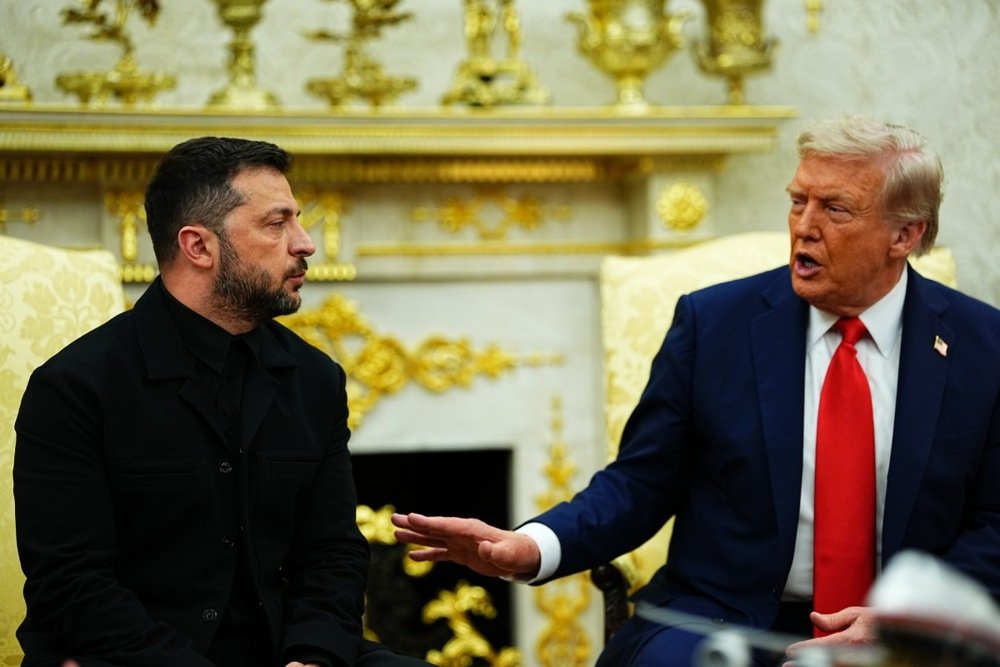
US President Donald Trump meets Ukrainian President Volodymyr Zelensky at the White House in Washington, DC, USA, 18 August 2025. Photo: EPA/AARON SCHWARTZ / POOL
For several months, the Pentagon has been privately blocking Ukraine from targeting Russia with long-range missiles, effectively reversing US President Joe Biden’s former policy, The Wall Street Journal (WSJ) reported on Saturday, citing two US officials with knowledge of the matter.
The Biden administration allowed Ukraine to use US-made weapons to strike deep into Russia in November, with Ukraine conducting several strikes on targets within Russia the same month.
However, after Trump took office, Kyiv requested the use of US-made Army Tactical Missile Systems, or ATACMS, on long-range targets in Russia on at least one occasion, but was rejected due to a new high-level approval procedure implemented by the US Department of Defence in late spring.
Due to the approval procedure, the WSJ reported, US Defence Secretary Pete Hegseth has had the final say over whether Ukraine can target Russia with ATACMS, as well as other long-range weapons that rely on US targeting data, such as UK-provided Storm Shadow cruise missiles.
“President Trump has been very clear that the war in Ukraine needs to end. There has been no change in military posture in Russia-Ukraine at this time,” White House press secretary Karoline Leavitt told the WSJ.
The Pentagon and Ukrainian officials did not respond to the WSJ’s requests for comment.
On Thursday, US President Donald Trump said in a social media post that unless Ukraine was “allowed to play offence,” the country would have “no chance of winning,” and blamed former President Biden for only allowing Ukraine to defend, and not “fight back”.
According to US officials cited by the WSJ, this remark did not represent a change in policy, especially in terms of the Pentagon’s review mechanism, although one senior White House official told the WSJ that Trump could decide to authorise expanded US-enabled Ukrainian offensive operations against Russia in the future.
The WSJ’s reporting comes amid wider news of a Ukrainian drone strike campaign in recent days, including a 95-drone attack on Saturday night targeting some fifteen regions of Russia, as well as annexed Crimea, the Russian Defence Ministry reported on Sunday, while not noting any casualties.
In the Kursk region, southwestern Russia, a drone was reportedly shot down in close proximity to the Kursk Nuclear Power Plant (NPP), sparking a fire and causing one of the plant’s reactors to decrease its operating capacity by 50%, according to the power plant’s press service.
On Sunday, the International Atomic Energy Agency (IAEA) said it was aware of reports that the Kursk NPP had partially caught fire “due to military activity", with Director General Rafael Grossi emphasising that “every nuclear facility must be protected at all times”.
Elsewhere, in northwestern Russia’s Leningrad region, a large fuel export terminal at the port of Ust-Luga also caught fire after debris from 10 intercepted Ukrainian drones ignited a blaze, regional Governor Aleksandr Drozdenko reported on Sunday.
